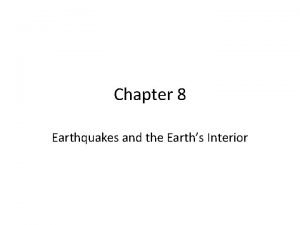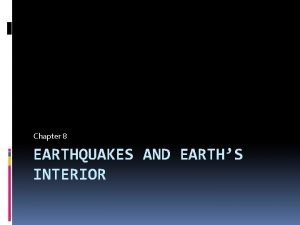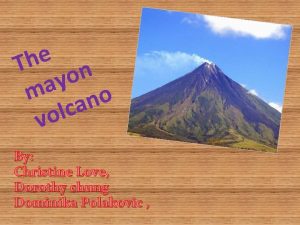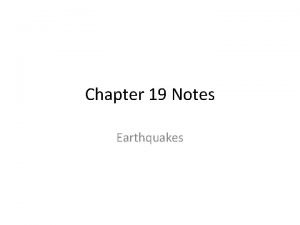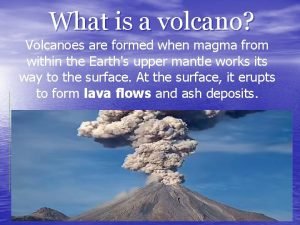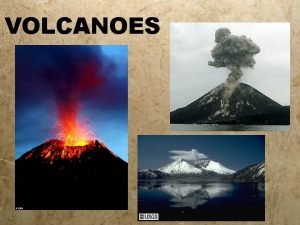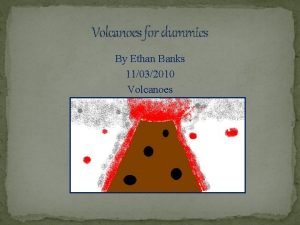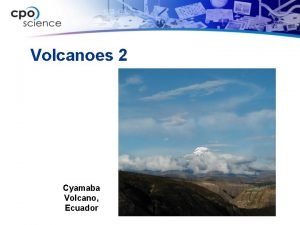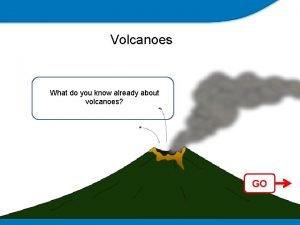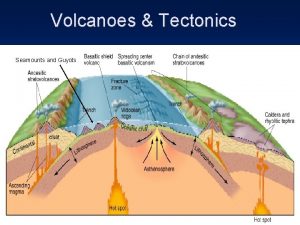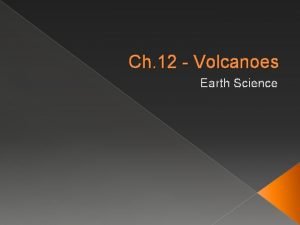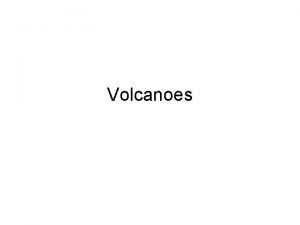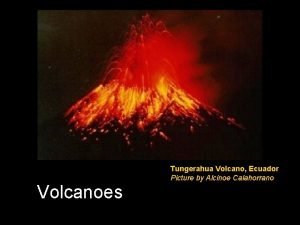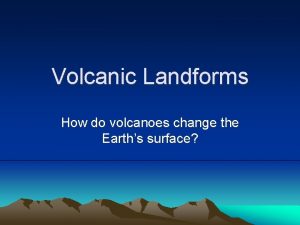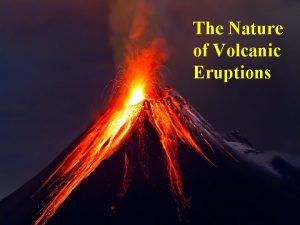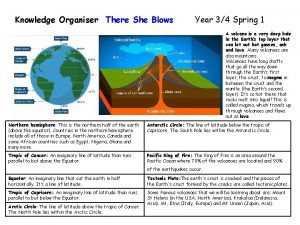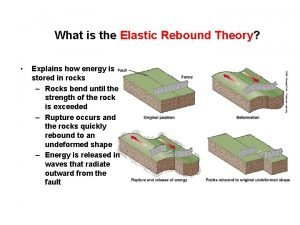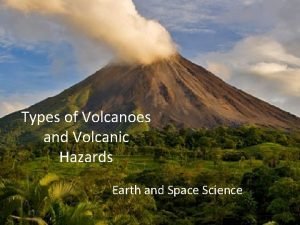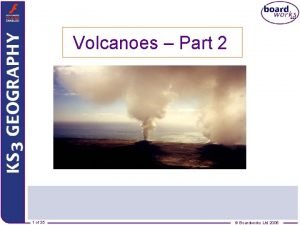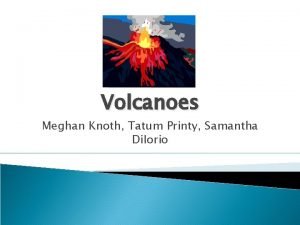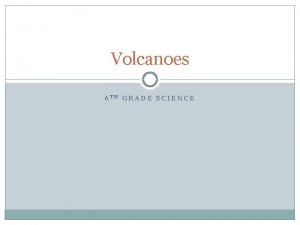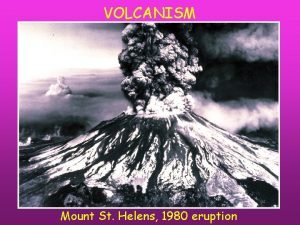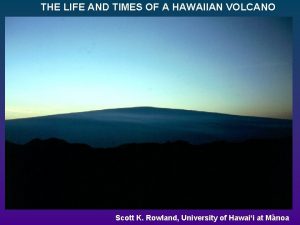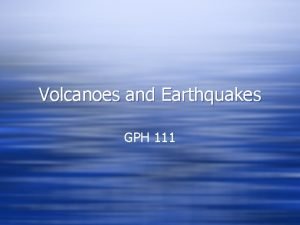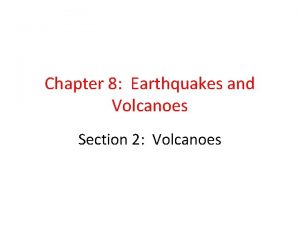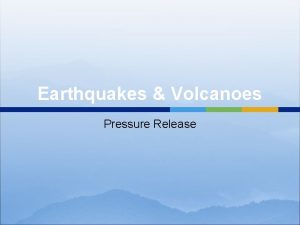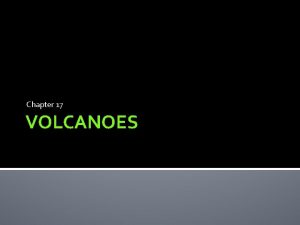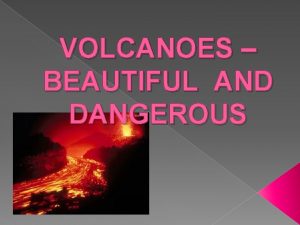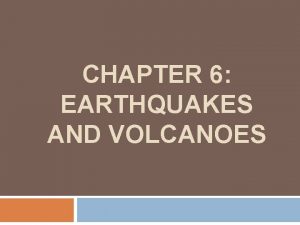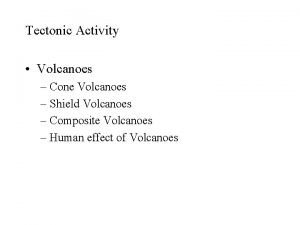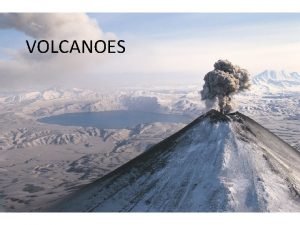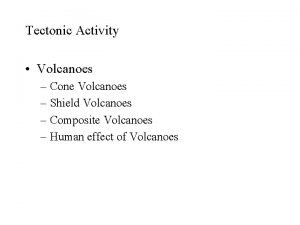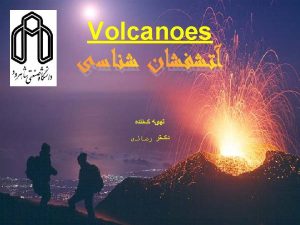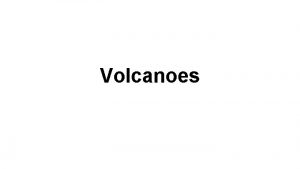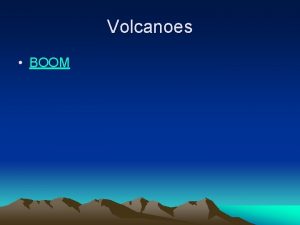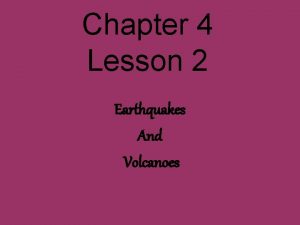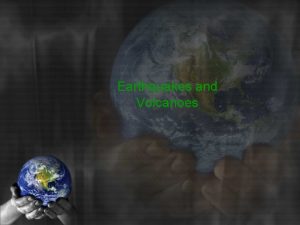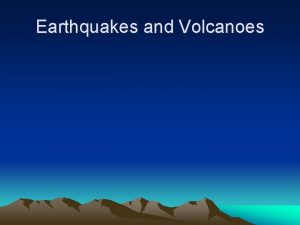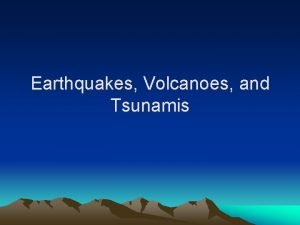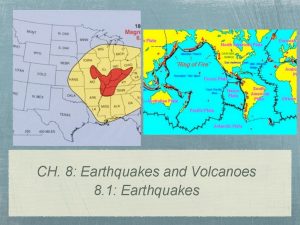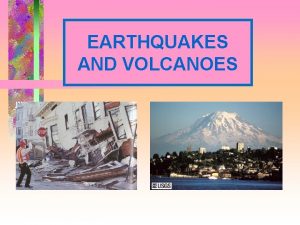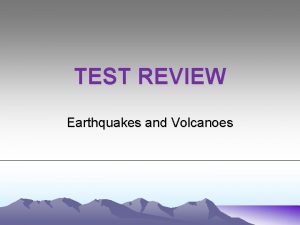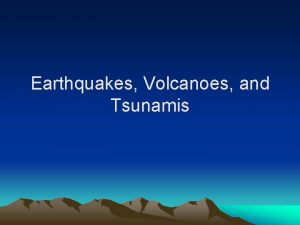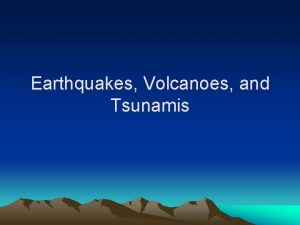Chapter 8 Earthquakes and Volcanoes Section 1 Earthquakes
































- Slides: 32

Chapter 8: Earthquakes and Volcanoes Section 1: Earthquakes

A. Earthquakes – large vibrations that move through rock or other Earth materials

1. Elastic rebound – when rocks strain and then break, the broken pieces snap back a. Rocks deform slowly over a long period of time. b. Potential energy builds up in them.

c. Energy is released suddenly when rocks break and move. d. The movement causes vibrations that move through Earth.


2. Fault – the surface of a break in rock a. Normal fault – caused by tension forces, rock above the fault moves down compared to rock below the fault.

Reverse fault b. Reverse fault– caused by compression forces, rock above the fault moves upward compared to rock below the fault.

Strike-slip fault c. Strike-slip fault – caused by shear forces, rock on either side of the fault moves past one another in opposite directions.

B. Seismic waves – when strained rock’s potential energy is released, it moves outward from the fault in seismic waves.

1. Focus – the point inside Earth where movement along a fault first occurs and energy is released.

2. Epicenter – the point on Earth’s surface located directly above the focus

3. Seismic waves start at the focus and travel away in all directions.

a. Primary waves – cause rock to move back and forth in the same direction the waves are moving

Secondary waves b. Secondary waves cause rock to vibrate at right angles to the direction the waves are moving

c. Surface waves – slowest, largest, most destructive waves (also called long waves)



C. Measuring earthquakes 1. Seismograph – instrument that records an earthquake’s vibrations

2. If seismic-wave arrival times are recorded from three stations, the epicenter can be determined

3. Richter scale – measures an earthquake’s size, or magnitude, based on the heights of lines representing the amount of energy released through seismic waves recorded on a seismograph


D. Earthquake Damage 1. Modified Mercalli intensity scale – measures an earthquake’s intensity based on the amount of structural and geologic damage.

2. Most earthquake damage is caused by surface waves.


3. Tsunamis – when an earthquake occurs on the ocean floor, the sudden movement pushes against the water and creates powerful waves that can travel thousands of kilometers



E. Seismic-safe structures are able to stand up against an earthquake’s vibrations. 1. Many high-rise buildings stand on huge steel and rubber springs.

2. Underground water and gas pipes are replaced with pipes that will bend. 3. Highways have cement pillars with spiral reinforcing rods around them.

F. Predicting Earthquakes 1. Long range forecasts predict whether an earthquake is likely to occur in a given area within 30 to 100 years. http: //www. world-earthquakes. com/index. php? option=ethq_prediction

http: //www. businessinsider. com/earthquake-resistant-buildings-2011 -3? op=1#ixzz 3 I 9 X 0 Yled

http: //video. nationalgeographic. com/
 Chapter 8 earthquakes and volcanoes
Chapter 8 earthquakes and volcanoes Chapter 8 section 1 what are earthquakes
Chapter 8 section 1 what are earthquakes In what section of earth do earthquakes happen
In what section of earth do earthquakes happen Chapter 8 earthquakes and earth's interior
Chapter 8 earthquakes and earth's interior Chapter 8 earthquakes and earth's interior answer key
Chapter 8 earthquakes and earth's interior answer key Differentiate active and inactive volcanoes
Differentiate active and inactive volcanoes Is erosion a constructive force
Is erosion a constructive force Chapter 19 earthquakes
Chapter 19 earthquakes Chapter 19 earthquakes
Chapter 19 earthquakes Description of volcano
Description of volcano How are volcanoes classified
How are volcanoes classified Volcanoes for dummies
Volcanoes for dummies Ecuador
Ecuador How are volcanoes made
How are volcanoes made What do you already know about volcanoes
What do you already know about volcanoes Three main ways volcanoes are created
Three main ways volcanoes are created Volcanoes nature's incredible fireworks
Volcanoes nature's incredible fireworks Types of volcanoes
Types of volcanoes How are volcanoes formed
How are volcanoes formed Most volcanoes occur __________. *
Most volcanoes occur __________. * Active volcanoes map
Active volcanoes map How do volcanoes change landforms
How do volcanoes change landforms Big island size broad slightly domed
Big island size broad slightly domed Volcanoes knowledge organiser
Volcanoes knowledge organiser Define elastic rebound
Define elastic rebound Types of volcanoes
Types of volcanoes Ring of fire volcanoes
Ring of fire volcanoes Magma chamber
Magma chamber Shield volcanoes
Shield volcanoes Factors affecting volcanic eruption
Factors affecting volcanic eruption Name volcanoes
Name volcanoes Where are volcanoes
Where are volcanoes Volcanoes on oahu
Volcanoes on oahu



